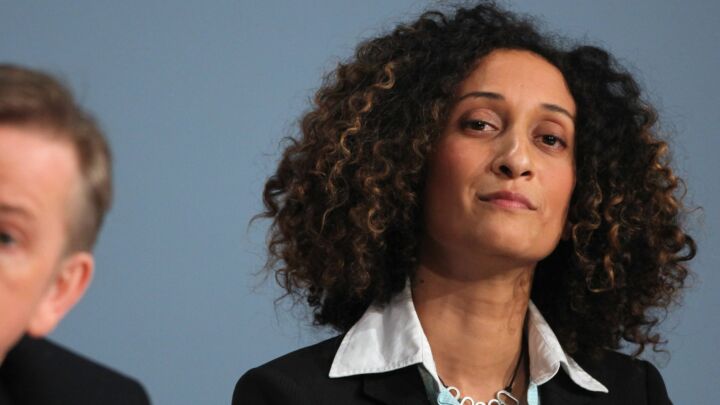The rise in crime
It is only relatively recently that crime became a political issue.

Engaging a distant public has become the overriding task of government and the British political class. And one way they hope to achieve this is through the issues of crime and antisocial behaviour.
In the three big parties’ manifestos in the 2005 General Election, crime, antisocial behaviour, security and safety featured prominently. All the parties promised more police, more prison places and more legislation for tackling crime. The campaign was marked by contending claims about the extent of crime and the parties’ ability to deal with it.
The rise of crime and antisocial behaviour to the top of the political agenda is a relatively recent phenomenon. For much of the twentieth century crime had a minor place in political life.
Take the manifestos of the big three political parties – Conservative/Unionist, Labour and Liberal – during the first half of the twentieth century. Of the 35 manifestos issued during the 11 elections between 1900 and 1935, there is only one brief reference to law and order. Despite acute political discord and, in the later interwar period, reports of rising crime rates, the topic failed to register as a party political issue. Similarly, after 1945 there was a rise in recorded crime, but the issue remained at the periphery of party political debate.
During the 1960s the countercultural antics of youth attracted much popular attention, but panics about crime tended to have an ephemeral character. Crime was overshadowed by issues such as unemployment, poverty, health and education. One analysis of postwar election manifestos revealed that it was only during the 1970s that crime emerged as a significant area of party contention. And despite attracting increased official interest, British criminal justice policy maintained a liberal direction.
It is only in more recent years that crime and antisocial behaviour ascended to the top of the political heap. This isn’t because there has been a rise in crime. Most categories of crime are at their lowest level for 20 years (1), yet somehow crime has maintained a lofty position in the hierarchy of contemporary public concerns (2).
Of course, over this period the meaning of crime has changed. Crime is a flexible rather than rigid category, shaped as much by cues from on high as by the concerns of the public below. When crime was discussed in the past, the dominant motif was not the individual as potential victim but the state as custodian of the offender. Crime and criminal policy exemplified the merits of welfare approaches to resolving social problems. The law and order campaigns of the 1970s and 80s signalled a distinct change. Crime became synonymous with violent pickets, black muggers and other supposed threats to the social order. In retrospect, the increased salience of law and order issues derived from an attenuation, rather than a hardening, of traditional affiliations.
During the late twentieth century, crime came to signify a more amorphous threat to the individual, experienced primarily in relation to his or her emotional wellbeing. In the 1980s and 90s, the focus of individual anxiety moved from identifiable targets such as black youth and militants, to more indistinct threats, such as unruly youth and noisy neighbours. The emergence of the politics of antisocial behaviour continued this trend. As Stuart Waiton convincingly argues, the antisocial behaviour issue is a very recent invention, driven by the government’s desire to recognise the everyday distress and pain of the public (3).
This point was confirmed in the General Election, where the ability to emote about the issue of crime was placed above the wielding of cold crime statistics. When the Tories claimed that crime was out of control they were rebuked by the Association for Chief Police Officers (ACPO) for their ‘selective use of statistics’ (4). Yet Labour’s claim that crime had fallen didn’t make much of an impact. Former home secretary David Blunkett said: ‘It’s no good telling people that over all fear of crime has gone down, that over all crimes dropped last year by 12 per cent, if they don’t feel it in their streets, in their homes, in their lives.’
For the political class, the issues of crime and antisocial behaviour seem to offer the prospect of bridging the chasm with a cynical and disengaged public. In his victory speech, prime minister Tony Blair promised to listen to the wishes of the electorate, and one of his first pledges was to end ‘yobbish behaviour’ and a ‘lack of respect’. Unable to look up and beyond, the government looks down and within, to the everyday angst of private life. Yet the war on antisocial behaviour is a feeble basis on which to cohere society.
Craig O’Malley is coauthor of ‘Who’s antisocial? New Labour and the politics of antisocial behaviour’, an Institute of Ideas occasional paper. See here for more information.
(1) According to the British Crime Survey conducted in 2003/4 the risk of becoming a victim of crime has fallen from 40 per cent in 1995 to 26 per cent, the lowest level recorded since the BCS began in 1981. Peaking in 1995, by 2004 crime has fallen by 39 per cent, with vehicle crime and burglary falling by roughly half and violent crime falling by over a third (Finney et al October 2004). A report by the IPPR claimed, ‘most categories of crime are at their lowest level for twenty years.’ (2004 Paxton et al).
(2) See The most important issues facing Britain today, on the MORI website
(3) See Stuart Waiton, in ‘Who’s antisocial? New Labour and the politics of antisocial behaviour’
(4) Daily Telegraph, 1 April 2005
To enquire about republishing spiked’s content, a right to reply or to request a correction, please contact the managing editor, Viv Regan.








Comments
Want to join the conversation?
Only spiked supporters and patrons, who donate regularly to us, can comment on our articles.